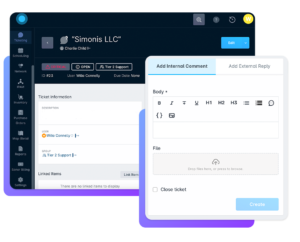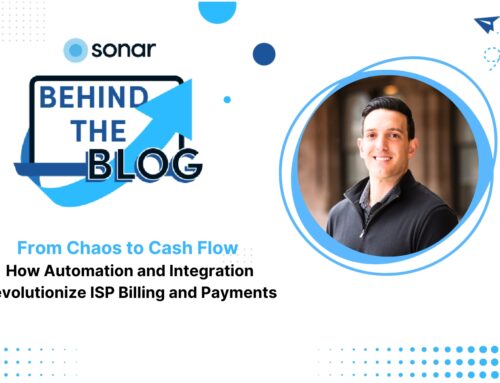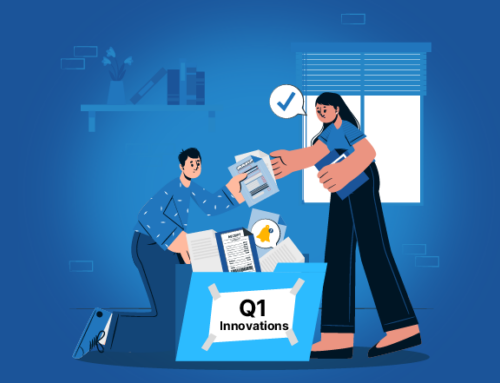Embracing technology can transform how ISPs connect with their customers. With the right tools and strategies, ISPs can move beyond simply managing communication mishaps to delivering the proactive, personalized, and efficient service that builds trust.
The cornerstone of exceptional customer experiences lies in effective communication. By proactively addressing subscriber needs, streamlining interactions, and fostering a genuinely customer-first approach, ISPs can build strong subscriber relationships that translate into loyalty and long-term success. This blog will discuss ways to overcome communication challenges to streamline communication, centralize support inquiries, and provide invaluable data insights.
Proactive Communication
By implementing these proactive communication strategies, ISPs show their commitment to transparency and prioritize addressing subscriber needs. This can significantly prevent complications, improve satisfaction, and minimize the need for customers to reach out for support in the first place.
Scheduled Maintenance Announcements: Keep subscribers informed ahead of any planned maintenance activities using email, SMS, or website notices. Clearly outline the timeframe and potential impact on service, minimizing surprises and frustrations.
Proactive Updates on Outages: If unexpected outages occur, don’t leave subscribers in the dark. Proactively provide real-time updates on restoration progress through your preferred channels. Acknowledging the situation goes a long way in building trust.
Educational Content: Empower subscribers with valuable resources on optimizing internet use, troubleshooting common issues, and understanding your services. This proactive approach reduces the volume of basic support inquiries.
Common Hurdles and Solutions
While proactive communication paves the way for a positive subscriber experience, several unique challenges can affect some best efforts for hybrid and fiber wireless companies. Here’s a breakdown of some common roadblocks and strategies to overcome them:
Disjointed Communication Channels
Problem: Subscribers often have multiple avenues to reach customer support, including phone, email, social media, website forms, and even in-person visits depending on the service provider’s setup. Navigating multiple platforms can be time-consuming, leading to a sense of disconnect between the subscriber and the ISP.
Solution: Centralizing communication is key to streamlining the process. Consider investing in a user-friendly, multi-functional support portal as the primary touchpoint for subscriber interactions. This platform should be designed to handle routine inquiries, and allow escalation to live support agents when needed. Additionally, ensure consistency across secondary channels like social media or email. By streamlining communication and providing a dedicated space for questions and support requests, both subscribers and support teams can operate more efficiently.
Information Vacuum During Outages
Problem: During network outages or service disruptions, subscribers may oftentimes feel confused due to a lack of real-time information. Uncertain about the cause, extent, and anticipated resolution timeframe, customers may use support lines or resort to social media, further overwhelming resources. This information vacuum can significantly impact customer satisfaction.
Solution: Implementing a dedicated status page on your website serves as a central hub for outage updates. Real-time data visualization tools can effectively communicate the scope and severity of disruptions. Automated SMS or email notifications for affected areas personalize the process and reassure subscribers that their concerns are acknowledged. Additionally, leveraging social media channels to provide updates and respond to inquiries can help maintain a sense of connection with your subscriber base during challenging periods.
Limited Support Availability
Problem: Issues can arise outside of business hours, leaving subscribers without immediate assistance and potentially impacting their work, entertainment, or communication needs. Delays in response time can create dissatisfaction impacting customer perception.
Solution: ISPs can explore extending support hours to better accommodate subscriber needs. In-house support expansion may be feasible, but outsourcing after-hours assistance can also be an option. Additionally, investing in robust self-service tools empowers subscribers to help themselves. A comprehensive knowledge base with clear instructions, FAQs, and troubleshooting guides can address basic issues without the need for immediate human interaction.
Difficulty Measuring Customer Satisfaction
Problem: Without a system in place to view customer satisfaction levels, ISPs may struggle to identify areas for improvement in communication strategies. This lack of concrete data can hinder proactive adjustments to communication approaches.
Solution: Utilize email or in-app surveys to collect direct feedback from subscribers on their customer service experiences. Analyzing support ticket resolution times can also provide valuable insights into subscriber complications and identify areas where communication breakdowns may be occurring. This comprehensive data collection allows ISPs to measure the effectiveness of their communication efforts and refine them based on subscriber feedback.
Benefits of Ticketing Systems
Streamlining Workflow: Ticketing systems create an organized system for handling support requests. Incoming issues automatically transform into structured tickets, replacing cluttered inboxes. This structured approach allows you to efficiently assign tickets to appropriate team members and reduces the risk of things slipping through the cracks.
Prioritizing Issues: Categorization features within ticketing systems allow you to prioritize support inquiries based on urgency or type. This ensures that critical outages or billing disputes receive immediate attention, improving response times and customer satisfaction.
Collaboration and Accountability: Collaboration within support agents can share notes, assign tasks, and keep everyone in the loop. This enhances accountability and ensures a smooth resolution process for the subscriber.
Data & Insights: Perhaps most importantly, ticketing systems generate invaluable data. Analyzing this data helps ISPs identify common pain points, reveal bottlenecks in support processes, and make informed decisions that improve the overall customer experience.
By addressing these challenges and prioritizing solutions for a centralized communication platform, real-time outage updates, extended support options, and data-driven feedback mechanisms, hybrid and fiber wireless ISPs can significantly enhance the customer experience. Ultimately, these efforts translate into improved customer satisfaction, increased loyalty, and provide a competitive edge!

Ticketing in Sonar

Sonar’s intuitive ticketing and CRM feature is designed specifically for ISPs, seamlessly integrating customer data and support requests. By eliminating siloed communication, your team gains a unified view of subscriber interactions. This consolidated approach empowers ISPs to reduce unnecessary support tickets, swiftly address customer concerns, and build long-lasting relationships within their subscriber base.




